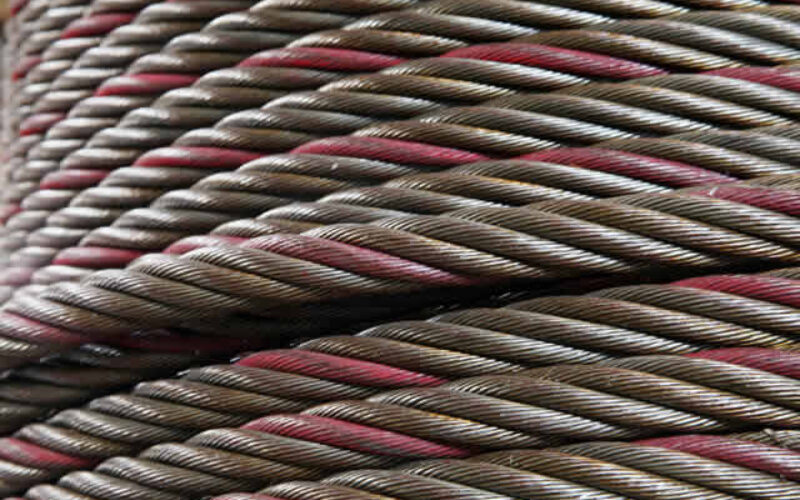Ropes are used to bind, elevate, pull, or secure, essentially acting as agents that make numerous operations possible.
The types of rope used in advancing productivity are as diverse as their application. Each industry has a specific requirement and ropes are usually designed to cater to such exact needs.
What is common, however, is the underlying importance attached to the ropes’ functionality and ultimate role in promoting safety.
- post content
- A Deeper Look Into Industrial Ropes
- Unravelling Industry-wise Uses of Ropes
- Diamonds in the Rough – A Spotlight on Wire Ropes
- Making the Right Choice: How to Choose the Right Rope for Your Industry
- Care and Maintenance of Industrial Ropes
- Predicted Trends in the Use of Industrial Ropes
- conclusion
A Deeper Look Into Industrial Ropes
Industrial ropes are made of various materials, and the choice of material is largely determined by the conditions and demands a rope will face within its lifetime. For instance, a rope that would face heavy loads and harsh weather conditions needs to be made of a material that can resist wear and tear easily.
Fibre ropes are constructed from a range of materials including natural products such as sisal and manilla and synthetics such as polyester, polypropylene, and nylon. Fibre ropes grant advantages in terms of flexibility and softness, making them the ideal choice for purposes that require gentle actions, such as tow ropes or rescue rope ladders.
On the other hand, wire ropes are made from individual steel wires that are twisted into strands and then wound around a core. Wire ropes feature an impressive strength that excels in bearing heavy loads and enduring harsh weather conditions.
Despite these advantages, wire ropes may not be the correct choice for every situation due to their rigidity and weight.
Unravelling Industry-wise Uses of Ropes
Starting with the construction industry, the usability of ropes is indeed massive. From the simplest task of marking boundaries to lifting heavy building materials through cranes, ropes play a crucial role. The most common type of rope used here is wire rope due to its strength and dependability.
Sports and event management also require the use of ropes. For instance, in sports like mountain climbing and rappelling, fibre ropes are prevalent for their flexibility. Similarly, in event management, ropes are used for marking perimeters or for decorative purposes.
Lastly, in households, ropes come handy in various tasks such as drying clothes, tying stuff, or even in gardening. For such purposes, usually, fibre ropes are preferred for their softness, flexibility, and ease of use.
Diamonds in the Rough – A Spotlight on Wire Ropes
Wire ropes are the backbone of heavy industries due to their unmatchable strength and durability. This distinctive structure gives wire ropes outstanding strength and resistance to wear and tear.
Wire ropes are widely employed in heavy-duty industries like mining, construction, and telecommunications. In mining, wire ropes are preferred for their load-bearing capabilities and resistance to breakage under tension.
In the construction industry, they are used in building elevators and cranes due to their uncompromising strength and durability.
Making the Right Choice: How to Choose the Right Rope for Your Industry
Choosing the right rope for your industry needs careful consideration of several factors such as weight, durability, weather resistance, and cost. If the work involves more heavy-lifting or the ropes will be exposed to harsh weather conditions, preferring wire ropes would be a wise choice.
Alternatively, if the work involves more of towing operations, rescue missions or decoration, fibre ropes would be more suitable given their gentleness and flexibility.
Moreover, rope selection is not only about choosing between wire and fibre ones; it also involves deciding on the rope’s thickness, length, and material composition. These aspects should be based on the specific requirements of your business’s operations.
Care and Maintenance of Industrial Ropes
To ensure the longevity and performance of industrial ropes, they ought to be given due care and maintenance. Any negligence in this matter can lead to serious accidents and massive losses.
Therefore, it’s crucial to regularly examine your ropes for signs of wear and tear. Especially in the case of wire ropes, lookout for broken wires, rusting, or discolouration.
In the case of fibre ropes, check for fraying, excessive stretching, or cuts. Each rope comes with its own set of maintenance guidelines, hence, always ensure to follow them stringently to get the best out of your ropes and avoid unintentional hazards.
Predicted Trends in the Use of Industrial Ropes
The innovation in rope technology is mainly focused on making ropes that are more enduring, reliable, and cost-effective. For instance, synthetic ropes are gaining popularity for their excellent strength-to-weight ratio, corrosion resistance, and easy handling.
With the growing emphasis on sustainability, ropes made from eco-friendly materials are likely to be in demand in the future.
Furthermore, the use of smart technology may also get incorporated into ropes. Smart ropes that can relay information about their health and lifespan can prove to be revolutionary in the safety aspect of industrial operation.
Conclusion
Industrial ropes, in all their variations, play a significant part in many industrial operations. Whether it is lifting heavy loads or serving as a lifeline for adventurous sports, ropes are the underlying support system that does it all.
As we go forward, the demand for better, stronger, and more versatile ropes is expected to grow. With proper care and maintenance, these humble elements can continue to serve us in many versatile ways, ensuring safety and efficiency in various industries.
Image Credit: by envato.com
end of post … please share it!
end of post idea for home improvement
view and analyze home improvement ideas at our LetsRenovate center
Helpful article? Leave us a quick comment below.
And please give this article a rating and/or share it within your social networks.












